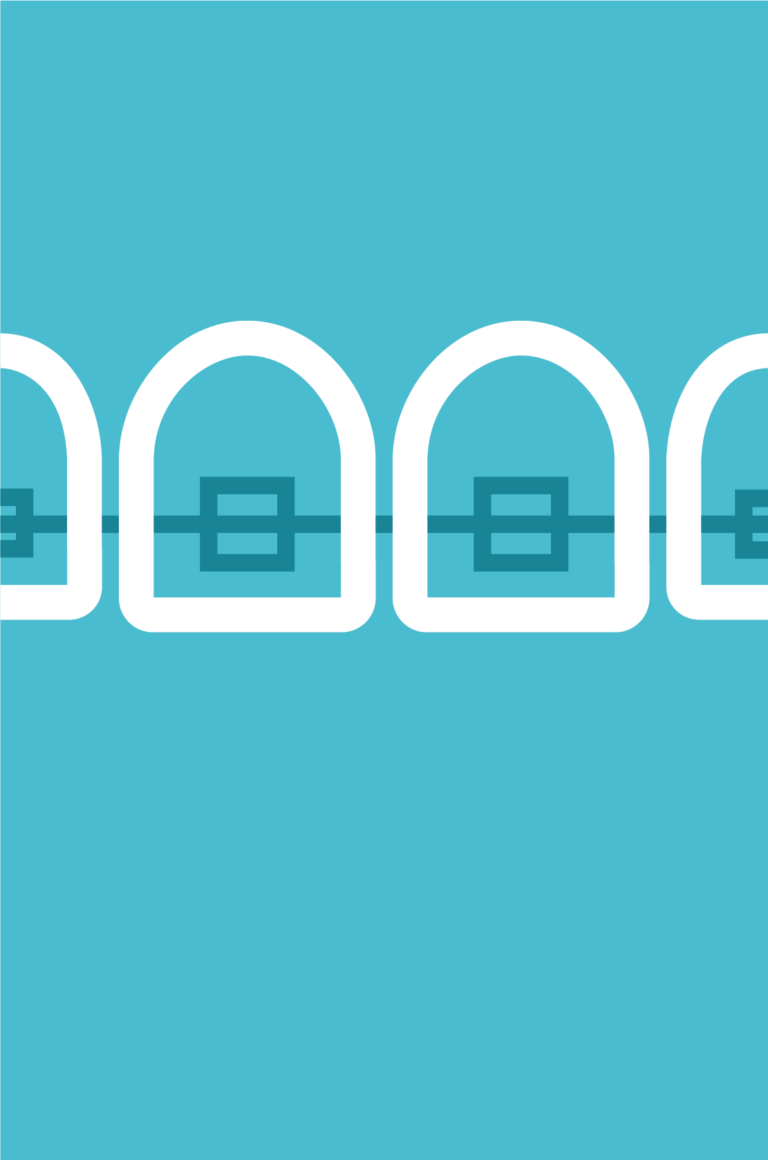We recommend scheduling your child’s first visit to the dentist as soon as their first tooth appears or around the time of their first birthday. The purpose of this initial appointment is purely to inform and educate parents on their kids’ dental hygiene as well as their nutrition. The preventative nature of these early consultations means that by adopting positive dental habits early on, dental issues such as tooth decay can be caught and treated in a timely manner.
During your child’s first appointment at the dentist, the check-up is done in a playful way in order to reinforce positive associations and avoid phobias which usually develop at a young age. The pediatric dentist will inform parents about:

Primary or baby teeth make their first appearance at around 5-6 months of age. The first teeth to erupt are usually the two bottom central incisors (the two bottom front teeth). By the age of three, most children will have acquired a complete set of 20 primary teeth.
Do primary teeth need cleaning?
Dental cleaning needs to begin as soon as primary teeth make their appearance in your baby’s mouth to reduce the risk of bacterial infection.
Initial cleaning can be done using a soft clean gauze or a finger toothbrush which can be found in pharmacies. An ideal time for teeth cleaning is after bath-time, or even better after feeding.
A little later, as soon as the first molars emerge at the rear of the mouth, we switch to using a kid’s toothbrush and water. Even if it doesn’t seem effective at first, it is important that we allow our child to try for themselves and get accustomed to this new routine. Of course, we should assist and adjust in the end if no progress is being made.
As soon as a child has learned to rinse out their mouth, we can introduce a children’s toothpaste. It’s up to parents to demonstrate the correct amount that should be applied on their brush which corresponds to the size of a small lentil.
Children learn by example so it is important not to underestimate the power of positive habits that they will acquire by watching you. Even if your daily schedule is busy, it is very important that you find the time to assist your child in this process as creating good habits is most certainly a team effort.

As a rule of thumb, by the age of 3, your child should have a complete set of 20 primary teeth. At the same time, the secondary dentition is developing under your child’s gums and preparing to emerge at around the age of 6. From the age of 3, systematic tooth brushing begins twice daily with an appropriate toothbrush and a pea sized amount of toothpaste. Up until the age of 6 your child should be using a fluoride toothpaste for children.
Milk: Always opt for fresh pasteurised milk with no sweeteners or flavourings.
Accidents: If your child’s front teeth ever change colour, its most likely that some kind of injury has occurred. Book an appointment with your pediatric dentist at the first opportunity for a check-up and further instructions.

During this period your child’s primary set of teeth will gradually be lost as their permanent teeth start to erupt. The ‘six-year molars’ are the first permanent molars that usually erupt during the sixth year and are located at the back of the jaw, behind their primary teeth. By the age of 8 your child will have four upper jaw incisors and 4 lower jaw incisors as well as one of their first permanent molars on each side.
Your child’s primary teeth are now giving way to more and more permanent ones and their dental needs are increasing. During this period the first molars (the large flat teeth towards the rear of the mouth) and the incisors (in the front of the mouth) are permanently replaced. At this point it is important to encourage children to open their mouth in front of the mirror after brushing, and to assess the condition of their teeth. Dental awareness needs to be encouraged and your children should consider their oral hygiene a personal matter.
By the age of 12, even the last of the primary teeth have usually fallen out, and from this point on, children have a set of 28 permanent teeth. Timely diagnosis of orthodontic issues at this age is very important and can prevent major orthodontic problems in the future.
The first permanent molars are extremely sensitive teeth. To protect them, we can apply a thin clear coating of resin liquid (sealants). These coatings can be beneficial for the future of your child’s oral hygiene. Take your child for a dental check up every six months, even if there aren’t any complaints of pain. This proactive care will help identify the problems in time before permanent damage occurs.

Scientific research and new dental techniques combined with past experience have helped many parents deal with their children’s orthodontic issues from a young age.
You can expect your child’s first visit to last about half an hour. During this appointment an initial assessment of the issue will be made as well as an evaluation of the condition of their oral hygiene. Parents will be informed about available orthodontic treatments and the relevant methods. For your second appointment you will be asked to bring along your child’s recent panoramic and cephalometric X-ray. We will also take imprints and images for our files. The final treatment plan will come out once we have assessed all the data.
Orthodontic treatment can take several months or even years. It usually lasts 1.5 to 2 years while its duration depends on the type of problem, the age of the child, observation of scheduled appointments, good care of orthodontic appliances as well as consistent adherence to the instructions given for each stage of treatment.
Early Orthodontic Treatment
Regardless of age, your child’s orthodontic condition will be assessed during each regular check-up. This allows us to enlist the help of non-invasive dental appliances such as space maintainers, and effortlessly prevent a wide range of problems before they make themselves permanent and worsen.

If the decision is made that your child needs a permanent dental appliance such as braces, they may feel pressure on their teeth especially during the first few days. This can be expected to gradually subside in less than 5 days. This discomfort is minor and temporary when compared to the expected result of orthodontic treatment.
There are three main types of braces: (a) traditional fixed metal braces which are placed on the front surface of teeth, (b) ceramic braces (white braces) and (c) lingual (or hidden) braces which are placed on the back surface of teeth. Our orthodontist will recommend the ideal orthodontic treatment for your child.
Invisalign aligners is a new innovative treatment method and a virtually invisible way to straighten your child’s teeth. Using state-of-the-art 3D computer imaging technology, Invisalign software will generate your child’s complete treatment plan, based on the initial position of his teeth to the final desired position. Then, a series of custom-made clear aligner trays will be made specially for their teeth so that they move little by little, through a series of carefully controlled movements.
Your child will wear each aligner tray for about two weeks and then replace it with the next custom-made one so that their teeth move slowly and progressively to the expected final position.
Invisalign clear aligners fit snugly on your child’s teeth and have been clinically proven to improve tooth movement control by gently moving teeth to their desired position.
If your child is in need of emergency dental care, we are always here to help you. We care about your child’s health and want to make sure they remain pain-free. If your child is dealing with a dental emergency, call us immediately on 210 623 0737
The most common cases of dental emergencies are usually related to any of the following conditions or symptoms:
If your child is experiencing any of these conditions or symptoms you should contact us immediately for advice, pain relief or recommended medication. Call us on 210 623 0737